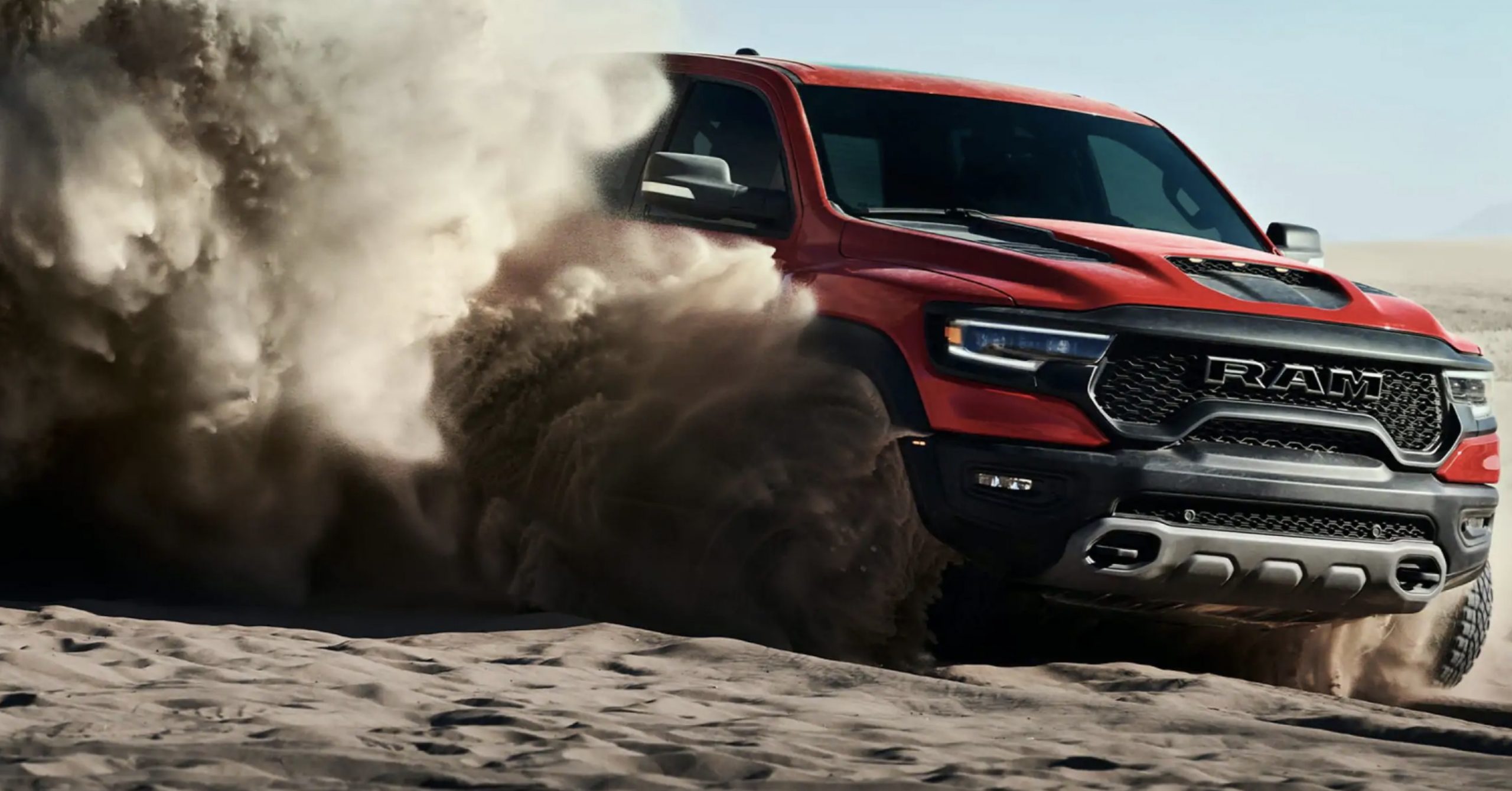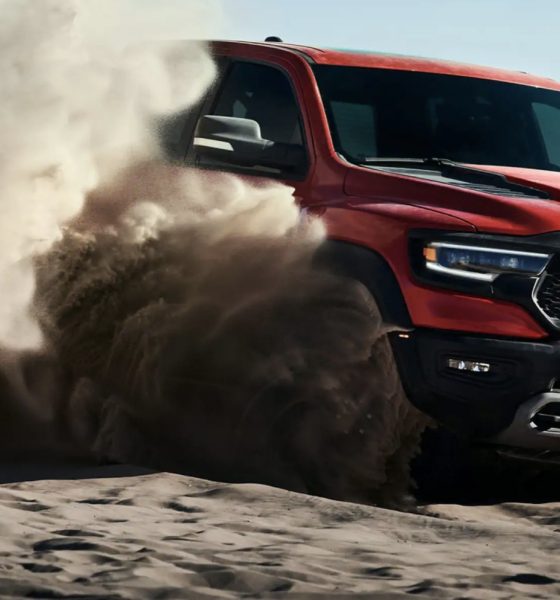Fiat Chrysler CEO Mike Manley hinted at an electric Ram pickup truck in the legacy automaker’s future. According to the Detroit Free Press, Manley did not offer any other details about Fiat Chrysler’s potential electrified Ram pickup, but he did note that such a vehicle will be coming.
“I do see that there will be an electrified Ram pickup in the marketplace, and I would ask you just to stay tuned for a little while, and we’ll tell you exactly when that will be,” Manley said during Fiat Chrysler Automobiles (FCA) Q3 earnings conference.
Manley’s recent statements hint at a bolder stance on electrification since in the second quarter. During FCA’s Q2 earnings call, Manley remarked that “Obviously, pickup trucks is a key franchise for us, and we’re not going to sit on the sideline if there is a danger that our position gets diluted going forward.”
Several automakers, from veterans like Ford and General Motors to newcomers like Tesla and Rivian, are going all-in on the electric pickup truck market. So far, GM has unveiled the gargantuan GMC Hummer EV, Ford has all but confirmed the work-focused F-150 Electric, Tesla has unveiled its futuristic Cybertruck, and Rivian is coming with the R1T, a luxury-adventure vehicle optimized for the outdoors.
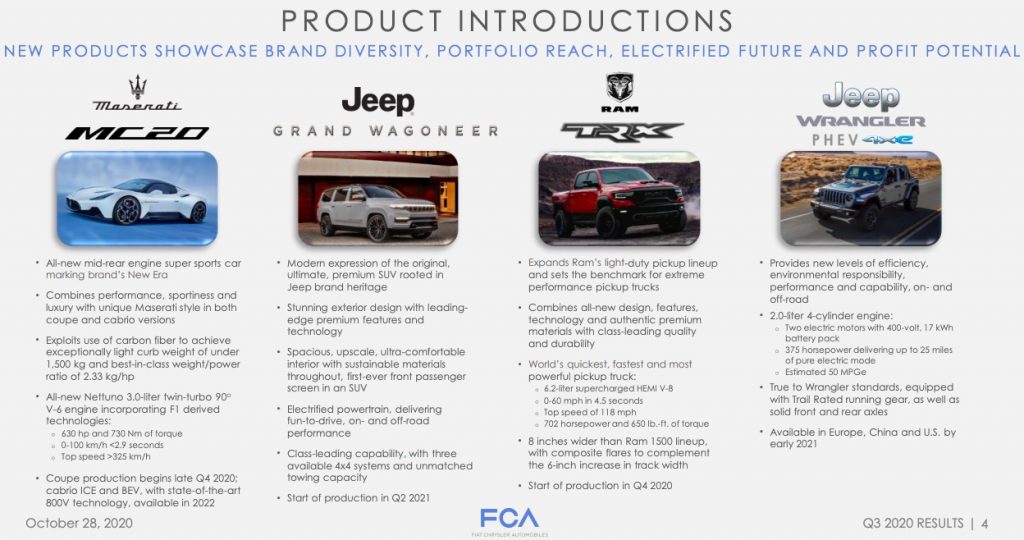
FCA introduced two Jeep vehicles in its Q3 presentation that showed the steps it took toward electrifying its lineup, such as the Jeep Grand Wagoneer and Jeep Wrangler PHEV. Neither of the Jeep variants were all-electric. It seems FCA, at least for now, is taking baby steps towards an electric future, but everyone needs to learn to crawl before walking.
The Jeep Wagoneer will have an electrified powertrain, which does not make it an all-electric vehicle, though it does show some progress on FCA’s part. The electrified Jeep Wagoneer’s production will start in Q2 2021.
Then there is the Jeep Wrangler PHEV 4Xe, which seems like a more serious step toward electrifying the company’s fleet. It will have a 2.0-liter 4-cylinder engine like any traditional ICE vehicle, but the Wrangler PHEV will also be equipped with two electric motors with 400-volt and a 17kWh battery pack. The 17 kWh battery pack is expected to provide the vehicle with 25 miles of all-electric range.
Fiat Chrysler’s steps to electrify two Jeep variants may be a stepping stone toward the electrified Ram pickup truck. He did not specify if the electrified Ram would be all-electric, though given the current trend in the pickup market with the Tesla Cybertruck, Rivian R1T, and most recently, the GMC Hummer EV, it may be a missed opportunity if Fiat does not release an all-electric pickup truck.
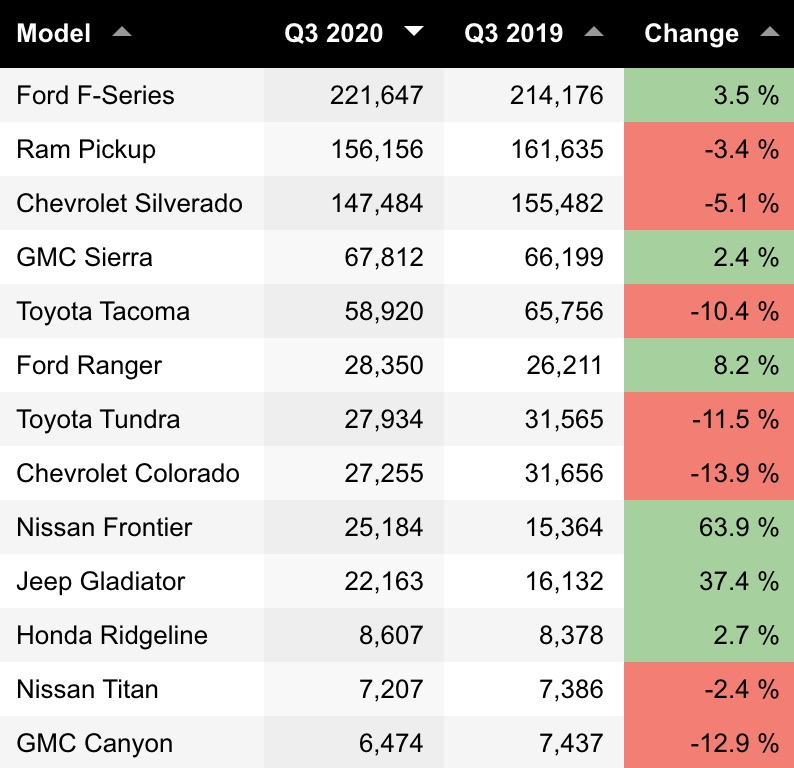
Perhaps Fiat could turn to Tesla for inspiration or advice if it were planning to produce an all-electric Ram truck. After all the two companies are not exactly strangers. Fiat Chrysler, together with General Motors, has been buying regulatory credits from Tesla. Tesla’s regulatory credits help the FCA meet the European Union’s strict emissions regulations.
Tesla and the FCA’s deal proved fruitful nearly a year later in April 2020 when the International Council on Clean Transportation (ICCT) announced the partnership made up 39% of total EV registrations in Europe. From that achievement alone, FCA must have a good idea of a RAM EV’s potential in the US market, where pickup trucks are popular.
FCA sold 156,156 Ram pickup trucks in Q3 2020, recorded Good Car Bad Car. Compared to other pickup trucks sold in the United States in the third-quarter, the Ram pickup came in second after Ford’s F-series, which sold 221,647 trucks. The Ram pickup performed just as well in Q3 2019.
Demand for electric trucks have grown evident over time. Interest in newcomers to the pickup truck market, like Rivian and Tesla, reveal that there are customers interested in EV trucks. And the fact that GM seems to have gained some traction with its Hummer EV may be evidence that customers are also interested in seeing what legacy automakers could offer in the market. FCA could grab some of that potential momentum with an all-electric Ram pickup.

News
Tesla Model Y L is gaining momentum in China’s premium segment
This suggests that the addition of the Model Y L to Tesla China’s lineup will not result in a case of cannibalization, but a possible case of “premiumization” instead.
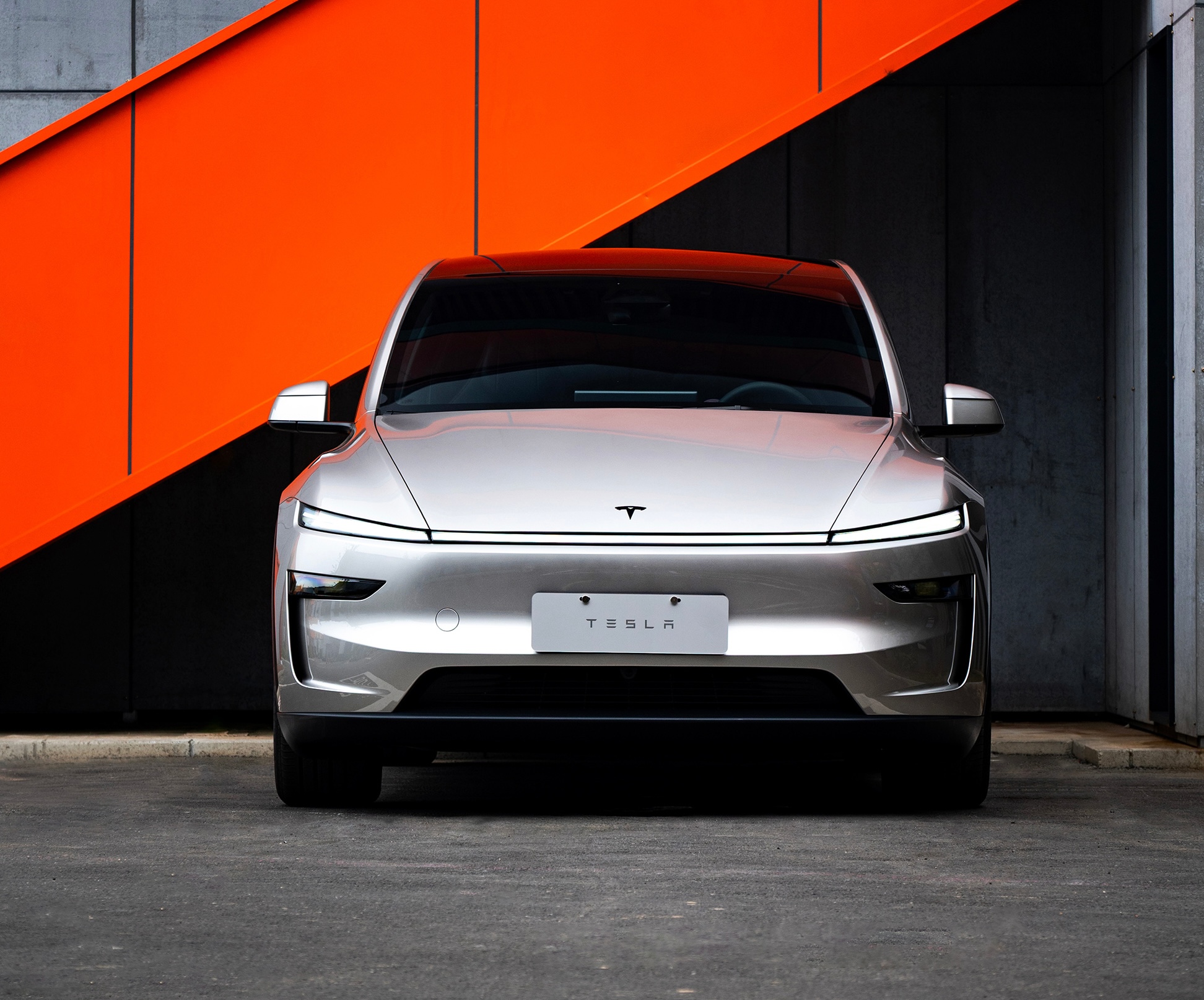
Tesla’s domestic sales in China held steady in November with around 73,000 units delivered, but a closer look at the Model Y L’s numbers hints at an emerging shift towards pricier variants that could very well be boosting average selling prices and margins.
This suggests that the addition of the Model Y L to Tesla China’s lineup will not result in a case of cannibalization, but a possible case of “premiumization” instead.
Tesla China’s November domestic numbers
Data from the a Passenger Car Association (CPCA) indicated that Tesla China saw domestic deliveries of about 73,000 vehicles in November 2025. This number included 34,000 standard Model Y units, 26,000 Model 3 units, and 13,000 Model Y L units, as per industry watchers.
This means that the Model Y L accounted for roughly 27% of Tesla China’s total Model Y sales, despite the variant carrying a ~28% premium over the base RWD Model Y that is estimated to have dominated last year’s mix.
As per industry watcher @TSLAFanMtl, this suggests that Tesla China’s sales have moved towards more premium variants this year. Thus, direct year-over-year sales comparisons might miss the bigger picture. This is true even for the regular Model Y, as another premium trim, the Long Range RWD variant, was also added to the lineup this 2025.
November 2025 momentum
While Tesla China’s overall sales this year have seen challenges, the Model Y and Model 3 have remained strong sellers in the country. This is especially impressive as the Model Y and Model 3 are premium-priced vehicles, and they compete in the world’s most competitive electric vehicle market. Tesla China is also yet to roll out the latest capabilities of FSD in China, which means that its vehicles in the country could not tap into their latest capabilities yet.
Aggregated results from November suggest that the Tesla Model Y took the crown as China’s #1 best-selling SUV during the month, with roughly 34,000 deliveries. With the Model Y L, this number is even higher. The Tesla Model 3 also had a stellar month, seeing 25,700 deliveries during November 2025.
Cybertruck
Tesla Cybertruck earns IIHS Top Safety Pick+ award
To commemorate the accolade, the official Cybertruck account celebrated the milestone on X.

The Tesla Cybertruck has achieved the Insurance Institute for Highway Safety’s (IIHS) highest honor, earning a Top Safety Pick+ rating for 2025 models built after April 2025.
The full-size electric pickup truck’s safety rating is partly due to the vehicle’s strong performance in updated crash tests, superior front crash prevention, and effective headlights, among other factors. To commemorate the accolade, the official Cybertruck account celebrated the milestone on X.
Cybertruck’s IIHS rating
As per the IIHS, beginning with 2025 Cybertruck models built after April 2025, changes were made to the front underbody structure and footwell to improve occupant safety in driver-side and passenger-side small overlap front crashes. The moderate overlap front test earned a good rating, and the updated side impact test also received stellar marks.
The Cybertruck’s front crash prevention earned a good rating in pedestrian scenarios, with the standard Collision Avoidance Assist avoiding collisions in day and night tests across child, adult crossing, and parallel paths. Headlights with high-beam assist compensated for limitations, contributing to the top award.
Safest and most autonomous pickup
The Cybertruck is one of only two full-size pickups to receive the IIHS’ Top Safety Pick + rating. It is also the only one equipped with advanced self-driving features via Tesla’s Full Self-Driving (Supervised) system. Thanks to FSD, the Cybertruck can navigate inner city streets and highways on its own with minimal supervision, adding a layer of safety beyond passive crash protection.
Community reactions poured in, with users praising the vehicle’s safety rating amidst skepticism from critics. Tesla itself highlighted this by starting its X post with a short clip of a Cybertruck critic who predicted that the vehicle will likely not pass safety tests. The only question now is, of course, if the vehicle’s Top Safety Pick+ rating from the IIHS will help the Cybertruck improve its sales.
News
Tesla stands to gain from Ford’s decision to ditch large EVs
Tesla is perhaps the biggest beneficiary of Ford’s decision, especially as it will no longer have to deal with the sole pure EV pickup that outsold it from time to time: the F-150 Lightning.
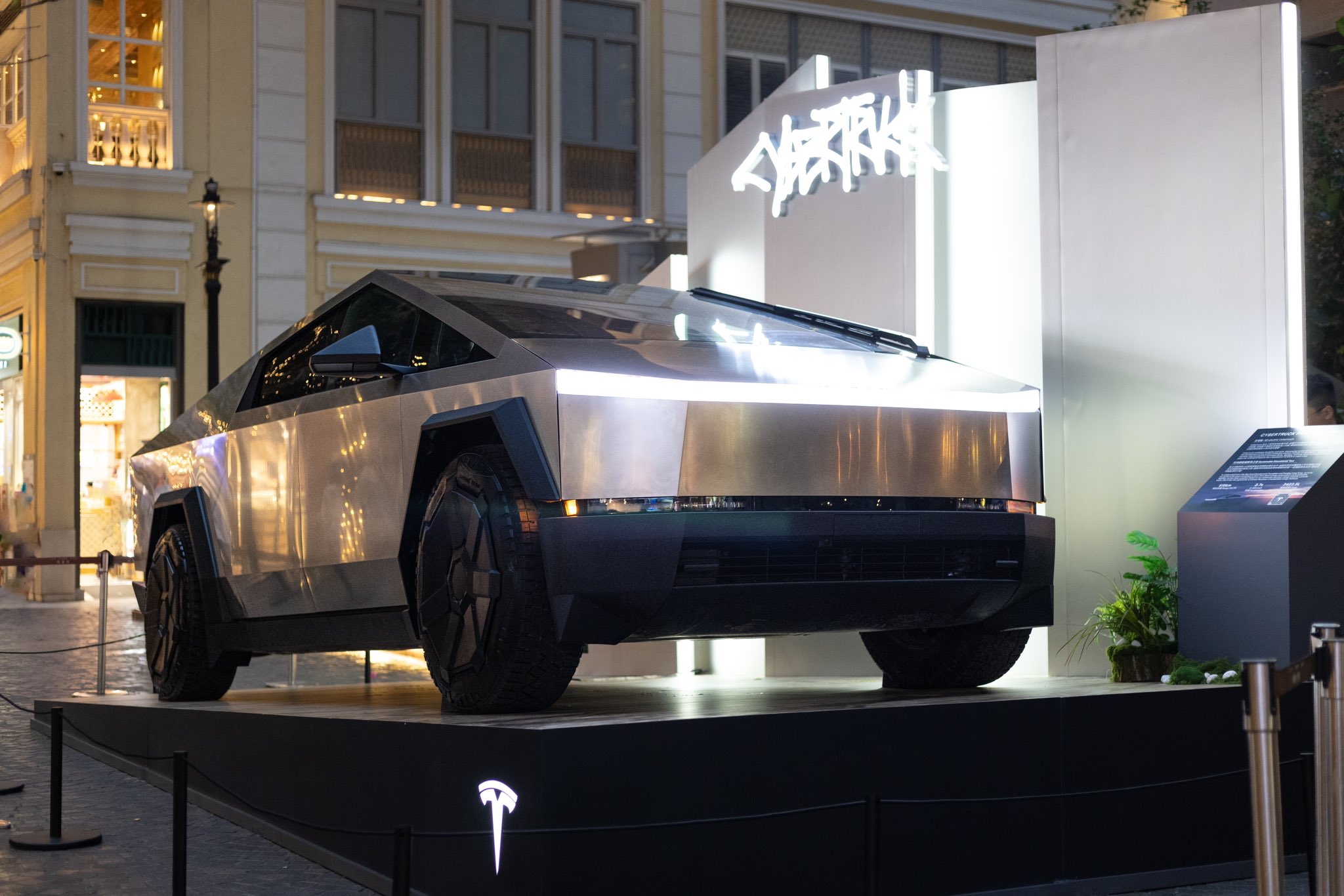
Ford’s recent decision to abandon production of the all-electric Ford F-150 Lightning after the 2025 model year should yield some advantages for Tesla.
The Detroit-based automaker’s pivot away from large EVs and toward hybrids and extended-range EVs that come with a gas generator is proof that sustainable powertrains are easy on paper, but hard in reality.
Tesla is perhaps the biggest beneficiary of Ford’s decision, especially as it will no longer have to deal with the sole pure EV pickup that outsold it from time to time: the F-150 Lightning.
Here’s why:
Reduced Competition in the Electric Pickup Segment
The F-150 Lightning was the Tesla Cybertruck’s primary and direct rival in the full-size electric pickup market in the United States. With Ford’s decision to end pure EV production of its best-selling truck’s electric version and shifting to hybrids/EREVs, the Cybertruck faces significantly less competition.
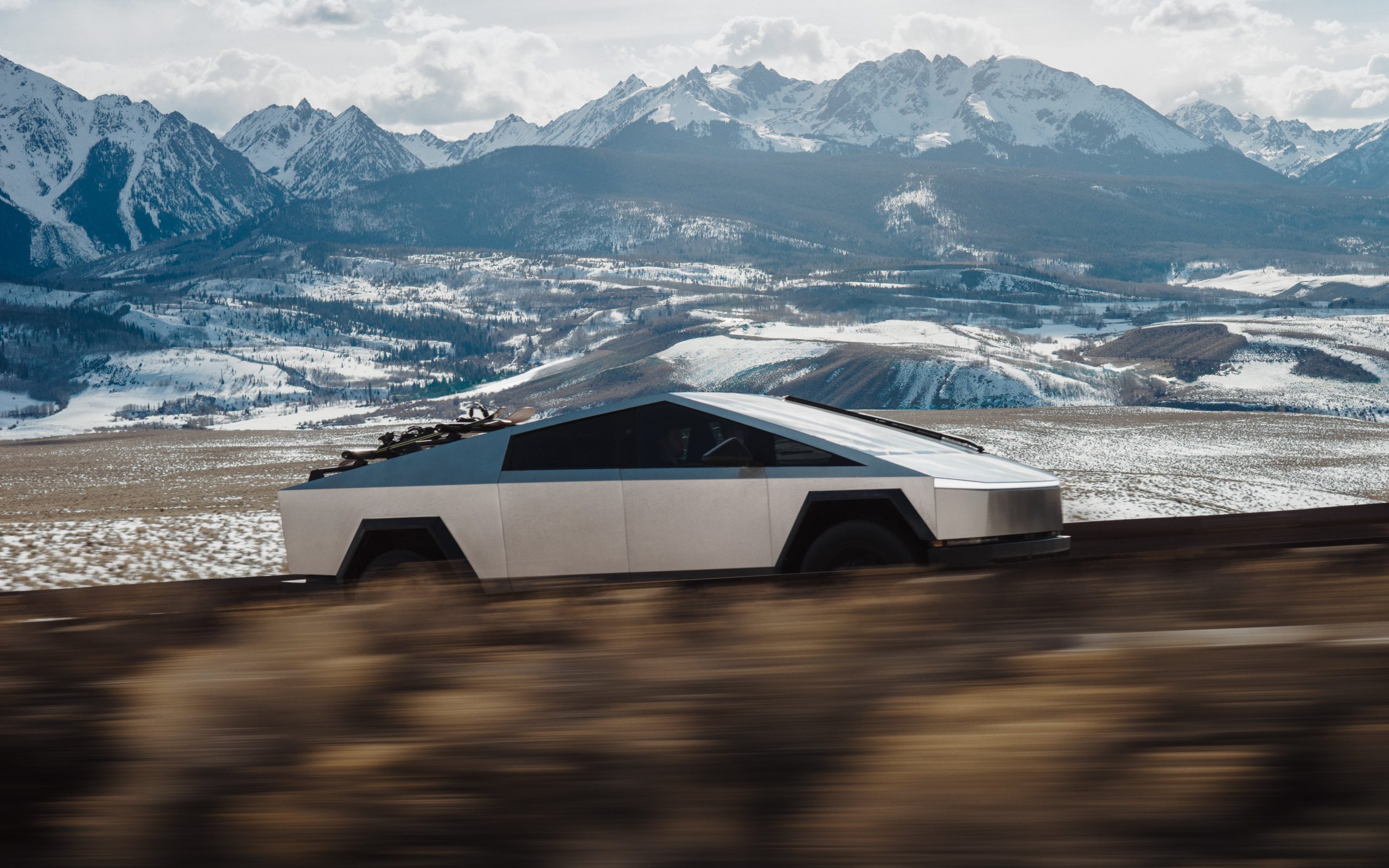
Credit: Tesla
This could drive more fleet and retail buyers toward the Cybertruck, especially those committed to fully electric vehicles without a gas generator backup.
Strengthened Market Leadership and Brand Perception in Pure EVs
Ford’s pullback from large EVs–citing unprofitability and lack of demand for EVs of that size–highlights the challenges legacy automakers face in scaling profitable battery-electric vehicles.
Tesla, as the established leader with efficient production and vertical integration, benefits from reinforced perception as the most viable and committed pure EV manufacturer.
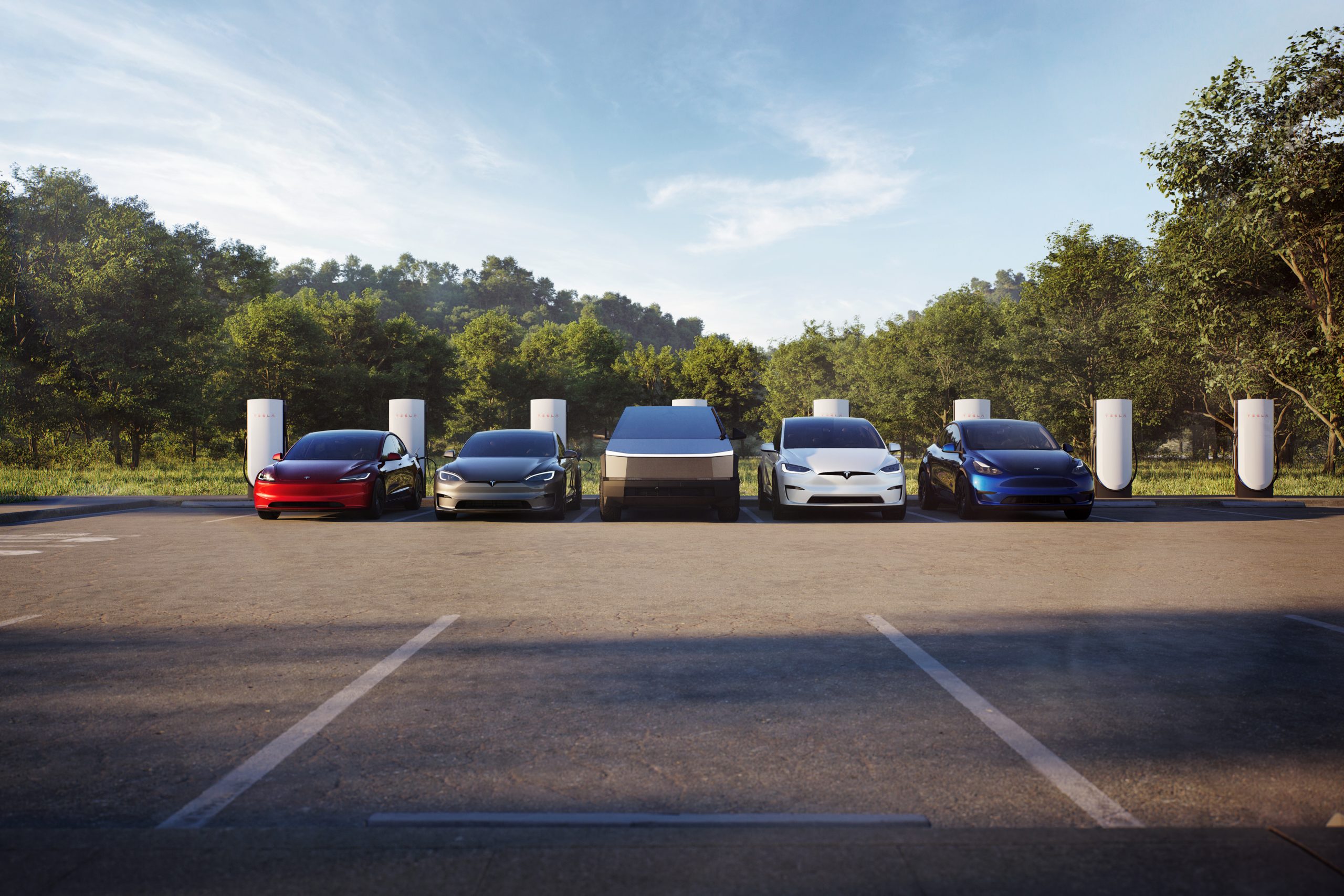
Credit: Tesla
This can boost consumer confidence in Tesla’s long-term ecosystem over competitors retreating to hybrids. With Ford making this move, it is totally reasonable that some car buyers could be reluctant to buy from other legacy automakers.
Profitability is a key reason companies build cars; they’re businesses, and they’re there to make money.
However, Ford’s new strategy could plant a seed in the head of some who plan to buy from companies like General Motors, Stellantis, or others, who could have second thoughts. With this backtrack in EVs, other things, like less education on these specific vehicles to technicians, could make repairs more costly and tougher to schedule.
Potential Increases in Market Share for Large EVs
Interestingly, this could play right into the hands of Tesla fans who have been asking for the company to make a larger EV, specifically a full-size SUV.
Customers seeking large, high-capability electric trucks or SUVs could now look to Tesla for its Cybertruck or potentially a future vehicle release, which the company has hinted at on several occasions this year.
With Ford reallocating resources away from large pure EVs and taking a $19.5 billion charge, Tesla stands to capture a larger slice of the remaining demand in this segment without a major U.S. competitor aggressively pursuing it.
